You’ve used half of your kefir but don’t have any plans for the leftovers. That’s when you wonder: can you freeze kefir?
Since kefir is a liquid dairy product, you don’t expect it to freeze particularly well. And you’re right.
But with a bit of planning and knowledge, you can actually do it with decent results.
Let me show you how.
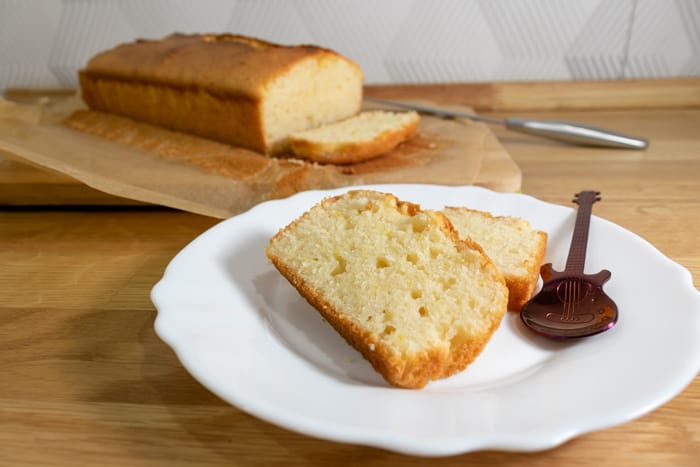
Can You Freeze Kefir?
You can freeze kefir, but it will separate once you thaw it. Drinking it as-is after defrosting isn’t a pleasant experience and is a no-go for most people. But you can still use it in most cooked and baked dishes, and maybe even in smoothies.
That’s the gist of it.
For starters, take a look at how defrosted kefir looks like:
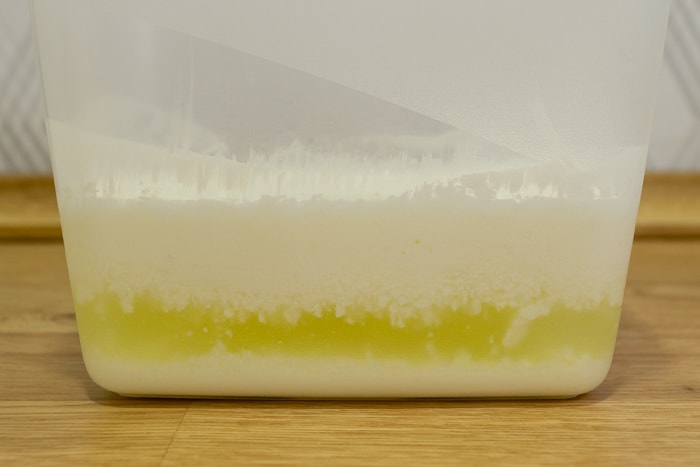
And here’s how the surface of the kefir looks like:
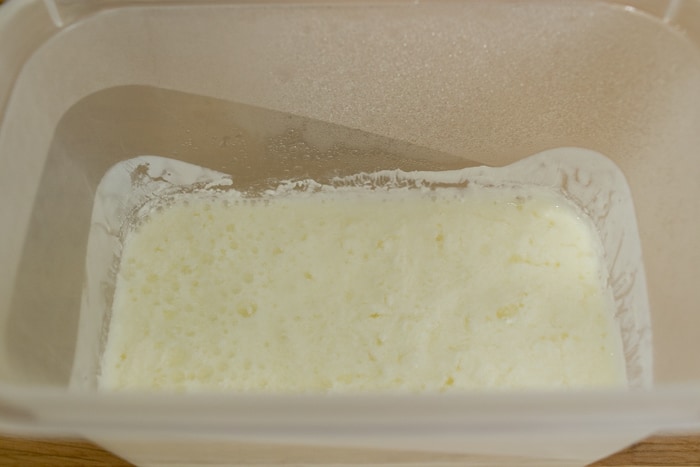
You can clearly see that it separated into milk solids and liquids. It doesn’t look that appealing, doesn’t it?
You can reduce the separation by freezing kefir in an ice cube tray, but the texture won’t be ideal after thawing either.
The obvious fix is to stir it or run it through a blender. That helps to even things out a bit, but it’s still far from ideal.
Here’s how that kefir looks like after stirring:
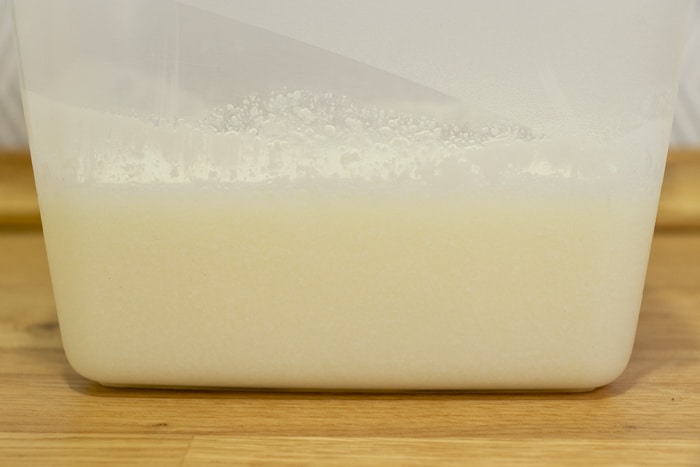
Fortunately, the altered texture isn’t that big of a deal if you use it in cooking or baking. And that’s how I suggest you use kefir that you freeze.
Now, let’s talk about how you can go about freezing kefir.
Two Ways to Freeze Kefir
You should freeze your kefir in amounts that make sense for how you’re going to use it after defrosting.
That means you should spend a minute or two planning in what dishes you’re going to use that kefir. This makes everything easier later on.
If you need a cup of kefir for pancakes, going with a container is probably your best bet.
But if you’d rather have many small cubes, an ice cube tray (or a muffin tin) is a far better option.
If you don’t have a specific plan in mind but need to freeze that kefir right now, go with an ice cube tray. Small cubes are more versatile, and you don’t have to worry about leftovers.
Let’s get into the specifics.
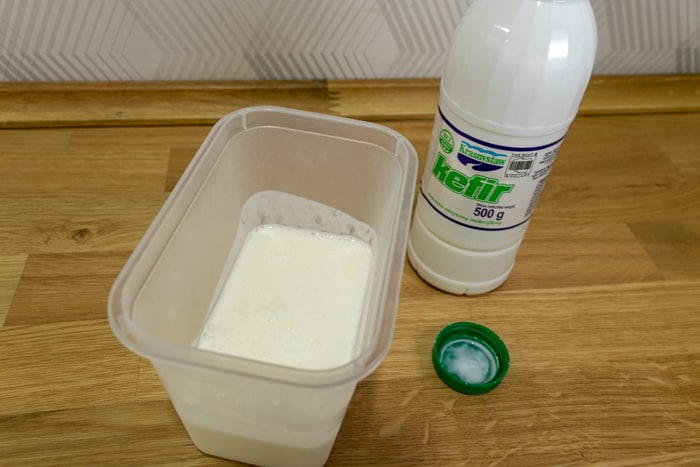
Freezing in Container(s)
- Portion the kefir. Pour the dairy product into the container(s) you prepared. Each one should have enough kefir for the dish you’re going to use it in. Leave some headspace to let the liquid expand.
- Seal the container(s).
- Add a label (if you like). If your freezer is crowded and you often lose track of what’s there and for how long, a post-it note on top could be useful.
- Transfer everything into the freezer.
That’s it. This whole procedure shouldn’t take you more than 3 minutes, depending on how much kefir you have to freeze.
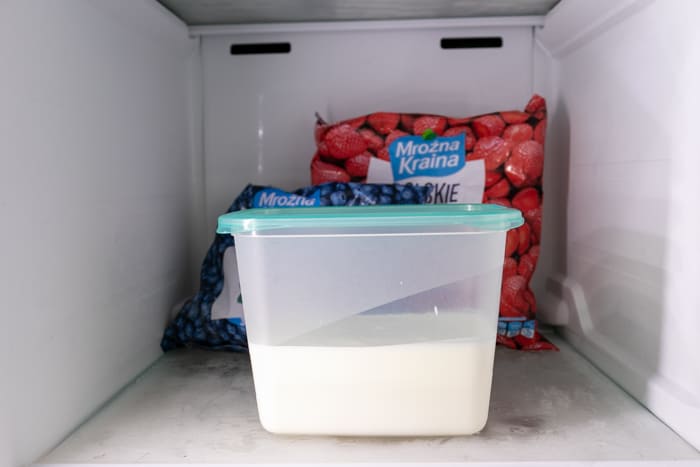
Freezing in an Ice Cube Tray
- Pour the kefir into the tray.
- Freeze the cubes. Place the tray in the freezer and leave it there until the kefir freezes solid. I often leave them to freeze overnight.
- Transfer the cubes into a freezer bag. Once the cubes are formed, you can transfer them into a freezer bag. This way, you get the tray back for other uses.
- Back in the freezer. Chuck the freezer bag into the freezer. If you like, label it with the name and date first.
This method is slightly more involved than the one with containers, but yields better results and is more versatile.
If the cubes are too small for your needs, you can follow the same process but use a muffin tin instead.
Thawing Frozen Kefir
Thaw your kefir in the fridge. The easiest way to go about that is to place it in the refrigerator the night before you need it, so that it’s thawed in the morning.
If you have a large container to defrost, place the kefir in a bowl of lukewarm water (still in the fridge). This way, you give it a head start.
Make sure your freezer bag is leakproof if you’re defrosting kefir cubes stored in a bag. If you’re not, transfer the cubes into a container or another bag first.
The time you need to thaw kefir depends heavily on the amount you have. It ranges between 1 to 2 hours for small cubes and up to 8 to 12 hours for a large container.
If you don’t use all of it right away, you can leave the leftovers for at least 1 to 2 days in the fridge. Or even refreeze them (refreezing is okay if you thawed it in the fridge).
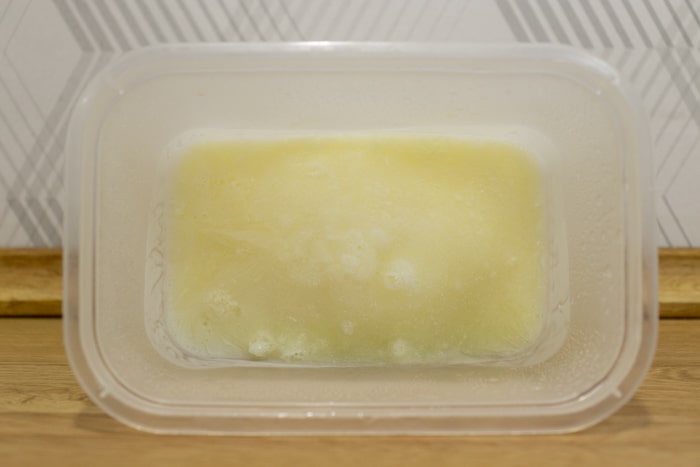
Defrosting Kefir on the Stove
Let’s say you completely forgot about thawing your kefir. Not that it ever happened to me.
Leaving it to defrost on the counter at room temperature would take too long, not to even mention waiting until it thaws in the fridge. That’s when the stove comes to the rescue.
This is a last-resort sort of method. Use it only if there aren’t any other options.
Basically, you thaw the kefir on the stove the same way you thaw a soup and soup-like dishes (e.g., lentil soup or chili).
You put the contents of the container in a pot on low heat and, for the next 10-15 minutes, you:
- move the frozen block around and turn it on its sides so that the bottom doesn’t burn
- stir the defrosted liquid
- chip away at the block so that it’s smaller and smaller
- turn the heat on and off (or take the pot off the heat) every minute or so, so that the kefir doesn’t boil
This method takes a lot of elbow grease, but it can get the job done. Remember to keep the kefir’s temperature reasonably low – you don’t want to bring it to a boil or even near that temperature.
Also, if you defrost your kefir this way, use all of it right away, and toss out any leftovers.
How To Use Defrosted Kefir
As I mentioned in the intro, you can use defrosted kefir in cooked and baked dishes.
Here are some popular examples:
- pancakes (check out this recipe, but any pancakes that use buttermilk or yogurt should work well too)
- cakes and other baked goods (take a look at this lemon kefir pound cake recipe from Lifeway Kefir)
- smoothies (here’s a recipe from Jessica Levinson, but you can substitute kefir for yogurt in your favorite smoothie)
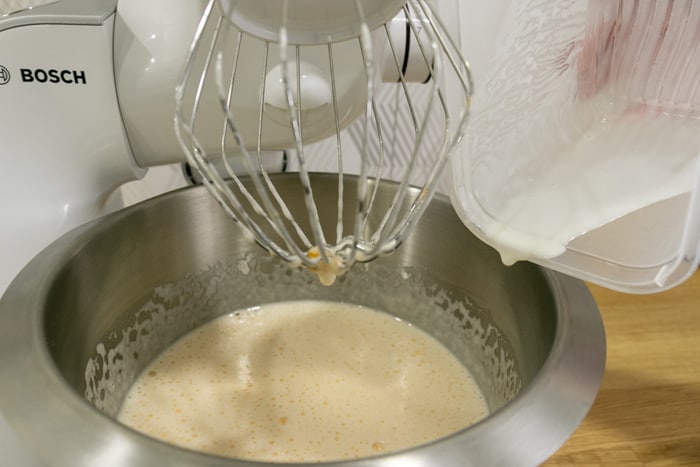
Note on Smoothies
If your smoothie calls for lots of kefir (e.g., it’s the only liquid ingredient in the recipe), your smoothie will end up kind of separated after blending it.
If there are lots of greens, veggies, and fruits in your smoothie, that separation will be hardly noticeable. But if it’s mostly kefir and a bit of this and that, the texture might be pretty bad.
To make sure separated kefir doesn’t mess up your smoothie’s taste and feel, try substituting defrosted kefir for 1/4 of fresh kefir, and see how that goes.
If everything is okay, or at least acceptable, go with a fifty-fifty ratio, and if that’s good enough, go all in.
Check the Texture
No matter what dish you’re making with thawed kefir, pay attention to texture.
Freezing and thawing kefir alters its texture, and if your recipe uses a lot of kefir, its texture might change as well.
That’s especially important in pancakes, where if the batter is runny, the pancakes will be flat, but if it’s too dense, the pancakes will be chewy.
Knowing the recipe well helps a lot.
FAQ
How Long Can You Freeze Kefir?
3 to 4 months is a safe bet, but your kefir should be pretty much fine (quality-wise) even if it stays frozen for 6+ months.
As a general rule, the sooner you defrost and use it, the better. Freezing itself is responsible for the product separating, so once it freezes, the “damage” is done.
Does Freezing Kefir Kill the Probiotics?
No. The probiotics become dormant after you freeze the yogurt, but they become active again once you defrost it.
Here’s how Lifeway Kefir puts it:
The probiotic cultures in our frozen kefir are dormant while frozen. When it is consumed, the probiotics resume activity and may provide all the benefits of cultures in refrigerated kefir.
Lifeway Kefir